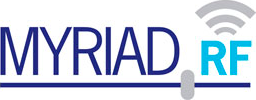Hi, thank you.
Yes, it applies to all host systems.
I just updated the stable branch to the latest version. I suggest using ‘develop’ branch, we’re currently still in rapid development, so there is no “stable” v1 release yet. Currently the “stable” branch is placeholder for deployment automation.
Correct.
DKMS is not part of the driver itself. It’s a system that automatically rebuilds registered driver modules, when the system kernel version changes.
Yes, it can run without DKMS. Just notice, that if you update your kernel version, the driver will have to be manually rebuilt and installed again for the new kernel version.
The driver is not digitally signed, so this is just a security notice, that the module is not “trusted”. It does not have effect for driver functionality. Only systems that have enabled “Secure boot” would refuse to use unsigned driver.
Using DKMS to build the driver signs it.
Yes, linux kernel headers are required for building the pcie drivers.
Headers usage is dictated by the KBuild system used to build the driver/kernel module. It will use headers of the kernel version that is being used to build the module, if the headers are not installed or an exact version of the headers is not available, build will fail.
Yes. lspci should always display the device. limeDevice depends on limepcie driver, so if it is not loaded, or LimeSuiteNG was built without PCIe support, then it woudn’t show it.
Yes, XTRX shipped with gateware version <1.13 had only 32bit dma adressing capabilities, unfortunatelly RaspberryPi requires at least 35bits (to circumvent that, dtoverlays need to be used to allow 32bit support).
Updating XTRX to latest gateware will support 64bit addressing and will not require dtoverlays.
